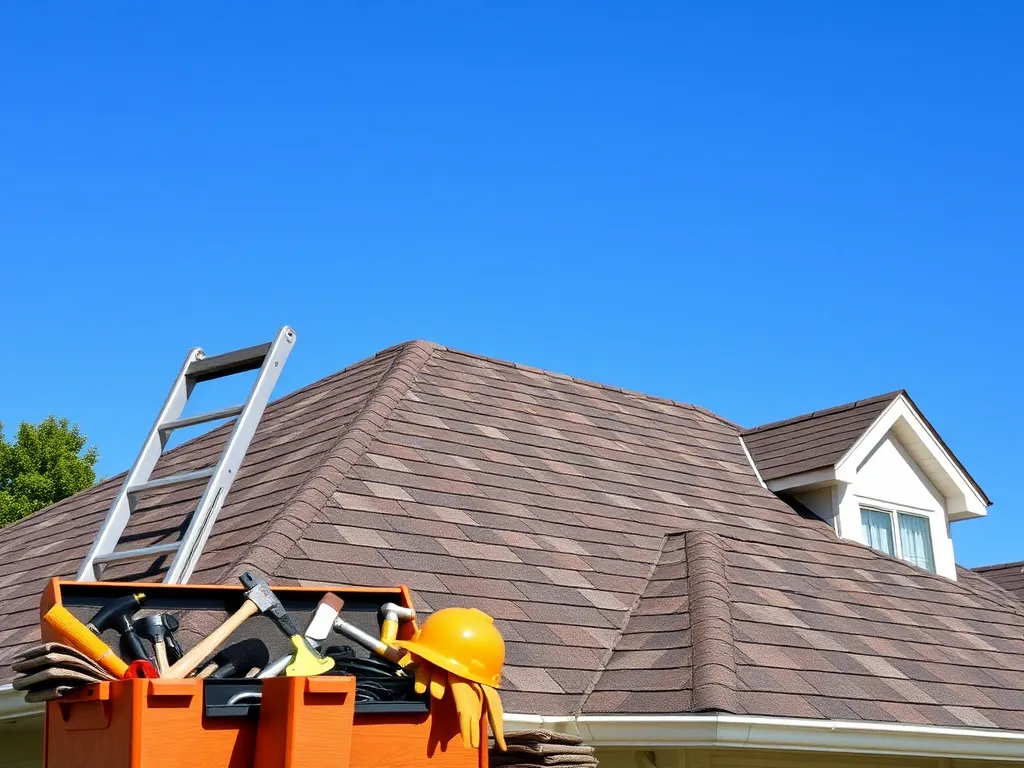Essential Guide to Roof Replacement: What Homeowners Need

A Comprehensive Guide to Roof Replacement
Roof replacement is a crucial aspect of home maintenance that involves removing an old roof and installing a new one. This process is necessary when a roof has reached the end of its lifespan, suffers extensive damage, or when a homeowner desires an upgrade in aesthetic or energy efficiency. Understanding the nuances of roof replacement can help homeowners make informed decisions about their property and its value.
Determining when to undertake a roof replacement requires careful consideration of various factors. Homeowners must assess the current condition of their roof, taking into account visible signs of wear and damage. Whether due to weathering, pests, or age, the importance of timely roof replacement cannot be overstated, as neglect can lead to more significant issues, including structural damage and high repair costs.
Another important aspect of roof replacement is selecting the right materials and contractor. There are numerous roofing materials available, each with specific benefits and drawbacks. Additionally, working with a qualified roofing contractor is essential to ensure a successful replacement. Homeowners should thoroughly vet contractors based on their experience, licensing, and insurance coverage.
The cost of roof replacement can vary significantly based on factors such as location, material choices, and the complexity of the project. Homeowners must budget appropriately and explore financing options to manage these costs effectively. Furthermore, understanding the impact of landscaping, weather conditions, and seasonal timing can help in planning a successful roof replacement project.
In summary, roof replacement is an investment in the longevity and safety of your home. By educating themselves on the process, costs, material options, and contractor choices, homeowners can ensure that their roof replacement is carried out smoothly and meets their needs for years to come.
Investing in a colorbond roof replacement can enhance your home's durability while adding a modern touch.
Cost of Roof Replacement
The average cost of roof replacement can vary significantly across different regions. In metropolitan areas, the cost can range from $5,000 to upwards of $20,000, while more rural areas may see costs from $3,000 to $15,000. Regional factors such as labor costs, material availability, and local building codes greatly influence these prices, making it important for homeowners to obtain multiple quotes.
Several factors affect the costs associated with roof replacement, including the roofing materials selected, the size and slope of the roof, removal of the old roof, and any required permits or inspections. Other considerations include local labor rates and the complexity of the roofing project, as diverse roof designs may require specialized installation techniques.
Considering an upgrade? Our experts provide the best options for asbestos roof replacement melbourne that suit your needs.
Homeowners may also explore various financing options for roof replacement. Many contractors offer payment plans, while banks and credit unions may provide home improvement loans or lines of credit. Some credit cards might also provide financing opportunities. Researching and understanding the best financing option can ease the financial burden of roof replacement.
Types of Roofing Materials
When it comes to roofing materials, homeowners often choose between asphalt shingles, metal roofs, and tiles. Asphalt shingles are popular due to their low cost and ease of installation, while metal roofs are lauded for their durability and energy efficiency. Tiles, made from materials like clay or concrete, offer longevity but come at a higher initial cost. Each material has its benefits and is suited to different climates and financial considerations.
Durability and lifespan vary among roofing materials. Asphalt shingles typically last around 15-30 years, while metal roofs can exceed 50 years with proper maintenance. Tiles can last significantly longer, sometimes up to 100 years. Homeowners should consider the lifespan in relation to the initial investment and potential long-term savings on repairs and replacements.
Energy efficiency ratings are essential when choosing roofing materials. Metal roofs, for instance, often feature reflective coatings that can significantly reduce cooling costs in warm climates. In contrast, asphalt shingles may have lower energy efficiency ratings, although options exist for more eco-friendly variations. Homeowners should consider energy efficiency not only for cost savings but also for environmental impact.
Choosing a Roofing Contractor
Selecting the right contractor for roof replacement involves asking key questions. Homeowners should inquire about the contractor's experience with similar roof types, their warranty offerings, and the timeline for project completion. Additionally, discussing potential issues or previous projects can provide insight into the contractor's capabilities.
Licensing and insurance are paramount when hiring a roofing contractor. A licensed contractor meets local regulations and standards, while insurance protects homeowners from liability should any accidents occur during the project. Always request proof of both before hiring a contractor to ensure protection for both parties.
Understanding contractor quotes and estimates is crucial. Homeowners should be able to break down each cost component, from materials and labor to permits. Comparing multiple bids can help homeowners identify reasonable pricing, ensuring they don’t pay too much or, conversely, choose a bid that seems too good to be true, which may result in poor workmanship.
Signs You Need a Roof Replacement
Common warning signs of roof damage include missing shingles, dark spots or stains on the ceiling, and granules from shingles in gutters. Additionally, visible sagging or curling of shingles may indicate underlying issues that warrant a complete roof replacement. Regular visual inspections can help catch these signs early.
Homeowners can assess their roof's condition through a thorough inspection. Look for water stains, mold growth, or any signs of decay. If unsure, consider hiring a professional for an objective assessment. Regular inspections can help understand the overall health of a roof and decide if replacement is necessary.
Scheduling professional roof inspections is vital, especially after severe weather events. Experts can identify hidden damage that may lead to larger issues if ignored. A good rule of thumb is to schedule a professional inspection at least once a year or after any major storm to ensure ongoing protection of your home.
DIY Roof Replacement
For the adventurous homeowner, DIY roof replacement is possible with the right tools and materials. Necessary items include roofing shingles, underlayment, nails, flashing, a ladder, and safety gear. However, it’s crucial for homeowners to weigh the risks and benefits before attempting this method, as improper installation can lead to further issues.
Safety precautions are essential when undertaking a DIY roof replacement. Homeowners should wear appropriate protective gear, including gloves, goggles, and sturdy footwear. It’s also vital to ensure that the ladder is stable and to never work alone, as accidents can happen unexpectedly.
A step-by-step guide to replacing a roof includes: 1) Remove old shingles and inspect the roof deck for damage. 2) Replace any damaged areas or decking. 3) Install a water and ice shield along the edges. 4) Lay down underlayment, followed by the shingles, ensuring proper overlap. 5) Finally, install flashing around vents and chimneys, and ensure thorough clean-up of the area.
Impact of Weather on Roof Replacement
Seasonal considerations play a significant role in roof replacement projects. The best seasons for replacement are typically spring and fall, as harsh weather can complicate the process. Homeowners should also consider weather forecasts to ensure a smooth transition throughout the project.
Protecting your home during extreme weather is crucial. Use tarps and additional insulation where necessary to safeguard against leaks. Furthermore, ensure that surrounding areas are clear of debris to prevent potential damage during high winds or heavy rain.
Ice dams can have significant effects on roofs in winter months. When melting snow refreezes at the roof’s edge, it can cause water to back up under shingles, leading to leaks and structural damage. Homeowners should be aware of this and consider insulation and ventilation improvements to mitigate such risks during winter months.
Maintenance After Roof Replacement
Extending the life of a new roof requires regular maintenance. Ensure that gutters are clean and free from debris, as well as checking for loose or damaged shingles. Additionally, forming a habit of inspecting for leaks or signs of wear can help prolong the life of the roof significantly.
Regular maintenance tasks for new roofs include cleaning gutters, replacing damaged shingles promptly, and ensuring proper ventilation to prevent shingle warping or moisture buildup. Keeping up with these tasks can reduce the frequency and cost of future replacements and repairs.
Scheduling professional roof inspections post-replacement should be done regularly, ideally once a year. Especially after significant weather events, it's vital to have a professional assess the roof's condition to catch any developing issues early and maintain proper longevity.
Roof Replacement and Home Insurance
Understanding how roof replacement affects home insurance is crucial for homeowners. Many policies include coverage for roof damage or replacement due to specific perils. However, homeowners should verify their policy details and ensure coverage limits are adequate to address potential costs in the event of a claim.
Filing claims related to roof damage can be complex. Homeowners should document damages thoroughly, including photographs and descriptions. It's also advisable to familiarize oneself with the claims process beforehand to ensure quick and efficient handling of claims when needed.
Choosing an insurance policy that covers roof replacement begins with research. Homeowners should explore different providers, understand their coverage options, and ensure that the policy includes damages resulting from common causes of roof degradation. Negotiating coverage terms may also provide additional benefits or coverage that could be advantageous.
<}k> 0